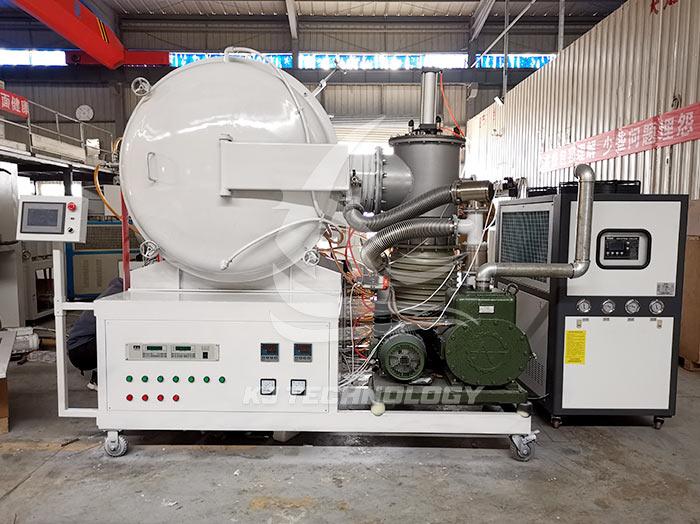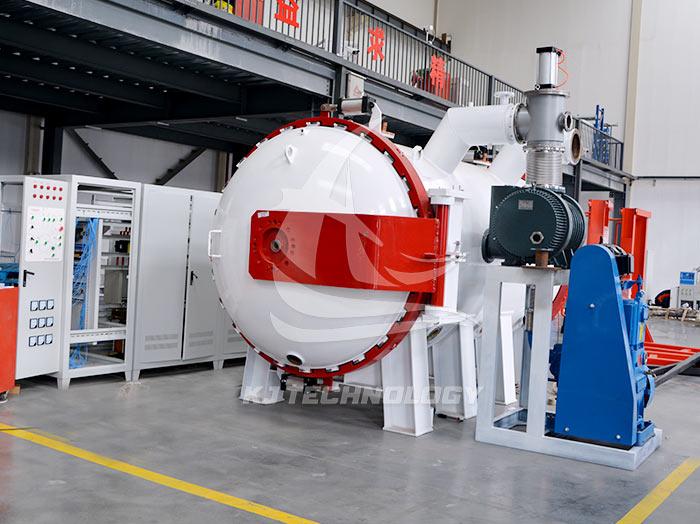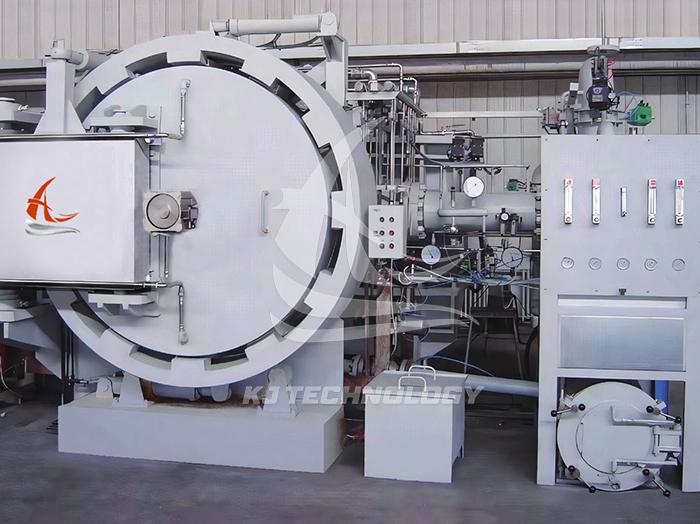What is the reason why the vacuum degree of industrial vacuum heat treatment furnace cannot be drawn up?
 05-08-2025 Author: KJ technology
05-08-2025 Author: KJ technology
The vacuum degree of industrial vacuum heat treatment furnaces cannot be pumped up, which may be caused by various factors such as vacuum pumps, sealing systems, vacuum pipelines, vacuum degree detection instruments, furnace contamination, vacuum pump oil, and operating procedures. The following is a specific analysis:
Vacuum pump related issues
Vacuum pump malfunction or performance degradation: The vacuum pump is the core component of the vacuum heat treatment furnace. If its internal wear, insufficient or contaminated lubricating oil, foreign objects entering, etc. occur, it will lead to a weakened pumping capacity. For example, pump oil pollution, insufficient or too thin, can cause poor operation or damage to the vacuum pump; Overheating of the pump and expansion of the components can lead to insufficient clearance, which can also affect the normal operation of the vacuum pump.
Improper selection or irregular replacement of vacuum pump oil: During long-term use, the moisture contained in the pumped gas enters the working chamber of the pump and condenses into other liquids, which reduces the vacuum degree and causes the vacuum pump oil to deteriorate and increase viscosity, making it difficult to start the pump.
Sealing system issues
Aging, corrosion or damage of sealing components: Aging, hardening or damage of sealing components such as furnace door sealing rings and O-rings can lead to poor sealing, gas leakage, and thus reduce the vacuum degree. For example, if the O-ring of the suction valve falls off, it will cause the vacuum degree to fail to meet the requirements.
Damaged sealing surface and loose fixing screws: In critical sealing positions such as furnace doors, electrodes, thermocouples, and other sealing components that are prone to leakage, if the sealing surface is damaged or the fixing screws are loose, it will cause gas leakage and affect the vacuum degree.
Improper assembly of components: Improper assembly of components can cause wear and tear, and reassembly can solve the problem of poor sealing caused by assembly issues.
Vacuum pipeline problem
Aging or damage of vacuum pipeline: Aging or damage of vacuum pipeline can cause gas leakage, thereby reducing the vacuum degree.
Loose pipeline connection: Poor sealing at the pipeline connection, with leakage points, can prevent the vacuum degree from being pulled up.
Vacuum degree detection instrument problem
The vacuum degree detection instrument is a key equipment for determining the vacuum degree of a vacuum heat treatment furnace. If it is damaged, it will result in the inability to accurately measure the vacuum degree, giving people the illusion that the vacuum degree cannot be pumped up.
Pollution problem inside the furnace
During the processing, some gases, impurities, and moisture may be generated. If these gases or impurities cannot be eliminated in a timely manner, it will affect the vacuum degree. For example, pollution in the vacuum carburizing chamber, gases, impurities, moisture, etc. generated during the treatment process, will reduce the vacuum degree.
Operational process issues
Not extending the pumping time: Insufficient pumping time may result in the vacuum degree not meeting the requirements.
Failure to clean or replace the exhaust filter: Blockage of the exhaust filter can affect the pumping efficiency, causing the vacuum degree to not be drawn up.
Electromagnetic valve failure, valve aging or damage: Electromagnetic valve failure, valve aging or damage can prevent gas from being discharged normally, affecting the vacuum degree. For example, blockage of the return valve can affect the normal operation of the vacuum pump, thereby reducing the vacuum degree.








